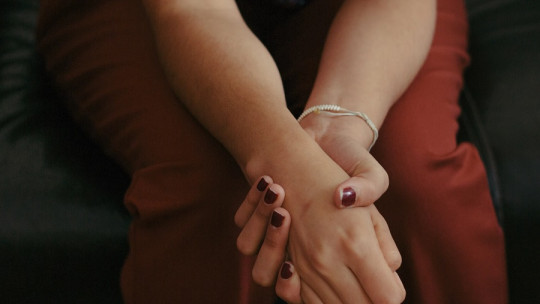
Cleinophobia is defined as an intense and persistent fear of being locked up, producing a feeling of discomfort in the subject and impacting their ability to cope with day-to-day situations.
In this article we will talk about cleinophobia and we will see what characteristic symptoms it shows, what causes explain its appearance and what therapies are used for its treatment.
What is cleinophobia?
As we can deduce from the name, cleinophobia is a type of phobia, specifically a specific phobia, classified as an anxiety disorder.
This psychopathology is characterized by giving rise to an intense and continuous fear of being locked up. It is necessary to verify that the fear is excessive and that the fear causes discomfort and/or has an impact on the subject’s functionality.
This point of severity is essential to be able to differentiate from the normal discomfort that can be observed in the population when faced with the situation of being locked up, and is what makes fear psychopathological in nature.
Symptoms
According to the fifth edition of the Diagnostic Manual of the American Psychiatric Association (DSM 5), for diagnose a specific phobia such as cleinophobia It is necessary for the patient to develop intense and disproportionate anxiety and fear of the feared situation or object, and to exhibit avoidance behaviors of the feared stimulus and the experience of feeling great discomfort if there is no other remedy.
Compliance with these criteria must occur for a minimum of 6 months, and the functional impact on the individual’s life must be global, both at work and socially or personally.

If we focus on the symptoms shown by subjects who suffer from cleinophobia, we will see that they affect the physical, behavioral and cognitive spheres. We must keep in mind that the manifestations that can be observed in this type of phobia can also be seen in other types of disorders, especially anxiety. Therefore, they function as indicators of possible presence of cleinophobia, but it will be necessary to see a mental health professional if we want to have greater certainty of the diagnosis and thus be able to begin the intervention.
The symptoms most frequently detected in patients with cleinophobia are:
These physical symptoms are also observed in patients with anxiety attacks, and phobias in general show similarity with other alterations associated with anxiety in the way it expresses its symptoms.
Regarding the cognitive expression of the disorder, the subject reports an intense fear of being locked up and shows catastrophic thoughts linked to the feared situation, such as the possibility of being locked up and no one coming to his rescue or being locked up without air and dying.
Finally, It is characteristic to observe behaviors of avoidance of places that can lead to the feared situation. For example, the person will avoid taking the elevator, even if this affects his or her quality of life (such as if he or she has injured his or her leg).
Causes
The causes of cleinophobia can be different. It is possible for it to appear at any age, although specific phobias typically begin in childhood or adolescence. As in any other mental disorder Genetics and environment influence its appearance and development. There is a biological part and a part acquired through experience.
It has been observed that if one of the parents shows a specific phobia, the probability that their child will also show this type of pathology increases. What’s more, the probability of presenting the same type of specific phobia increases. In this way, if the father has a diagnosis of cleinophobia, the probability that his child will also have it increases, compared to the probability if the parent does not show the condition.
Likewise, there is also environmental influence on the appearance of the phobia. Fear can arise after living a traumatic experience where the individual was locked up for a time without the possibility of leaving and with great discomfort. The traumatic event does not have to be experienced by the subject in the first person, but he or she can acquire fear after hearing or knowing about a traumatic situation that a known person experienced, who tells how bad it was for them when they were locked up. That is, fear can be acquired vicariously.
In this way, we will say that cleinophobia shows genetic and environmental influence in its development. The subject may have a biological predisposition to show the pathology that is increased and leads to the appearance of the disorder if the individual experiences a traumatic event related to the situation of confinement.
Treatment of the phobia of being locked up
Once the correct diagnosis of the disorder has been made, the most appropriate treatment is applied to reduce the symptoms and recover the subject’s functionality. We must take into account that If the fear does not impact the subject’s life, we will not consider it a phobia ; Therefore, if we have made the diagnosis it is because it really needs an intervention.
Pharmacological treatment has been tried, which can be useful when the discomfort is very intense and we need the symptoms to decrease in intensity fairly quickly. In this sense, anxiolytics or antidepressants are used to carry out a prior control, stabilize the subject if they are in a crisis situation or reduce the symptoms so that, in this way, the psychological intervention achieves greater effectiveness.
But in no case can drug intervention be long-term or chronic; It should be progressively withdrawn when the patient shows improvement and does not need it, always controlled and prescribed by a psychiatrist.
Psychological treatment should be the first choice and the one that will really produce a long-term change in the subject, and will manage to mitigate the symptoms of the phobia.
In this type of psychological intervention, several techniques are used that have shown effectiveness in reducing specific phobias. We can begin the intervention by applying psychoeducation, which consists of informing and providing greater knowledge to the subject of the pathology they present so that they understand the symptoms, can name what is happening to them and know that there are treatments to reduce the discomfort and feel better.
Another of the most used techniques that has shown greater effectiveness for specific phobias and in this case for cleinophobia is exposure. This behavioral strategy consists of exposing the subject to the feared stimulus to the situation of being locked up, with the intention of remaining in the situation without fleeing and thus gradually achieving that the discomfort and symptoms decrease.
The process can be carried out more intensely and place the subject directly in the situation of maximum anxiety or do it more progressively and increase the intensity and anxiety little by little. Both strategies have shown effectiveness, for this reason we will choose according to the characteristics of the individual. We must keep in mind that massive exposure, without progression, can achieve earlier change, but generates greater rejection on the part of the subject, so we must assess what interests us more.
In the same way that the intensity of the exposure does not vary the effectiveness, it has been observed that in vivo exposure, that is, exposing to the actual phobic stimulus, is more effective than doing it any other way. Even so, if it is unbearable for the individual or it is difficult to ensure that the feared situation is repeated or we control it to our liking, we can use other strategies. For example, interoceptive exposure, which consists of intentionally generating the physical, bodily activation symptoms that appear in the feared situation so that the individual learns to control them.
Finally, treatment with cognitive-behavioral techniques has also shown effectiveness. Apart from behavioral intervention with exposure, the use of cognitive techniques such as cognitive restructuring They can help modify irrational beliefs and catastrophic thoughts and look for more functional alternatives, thus improving the patient’s condition.








